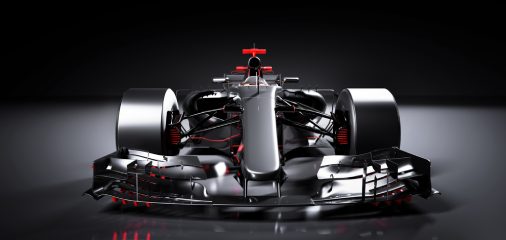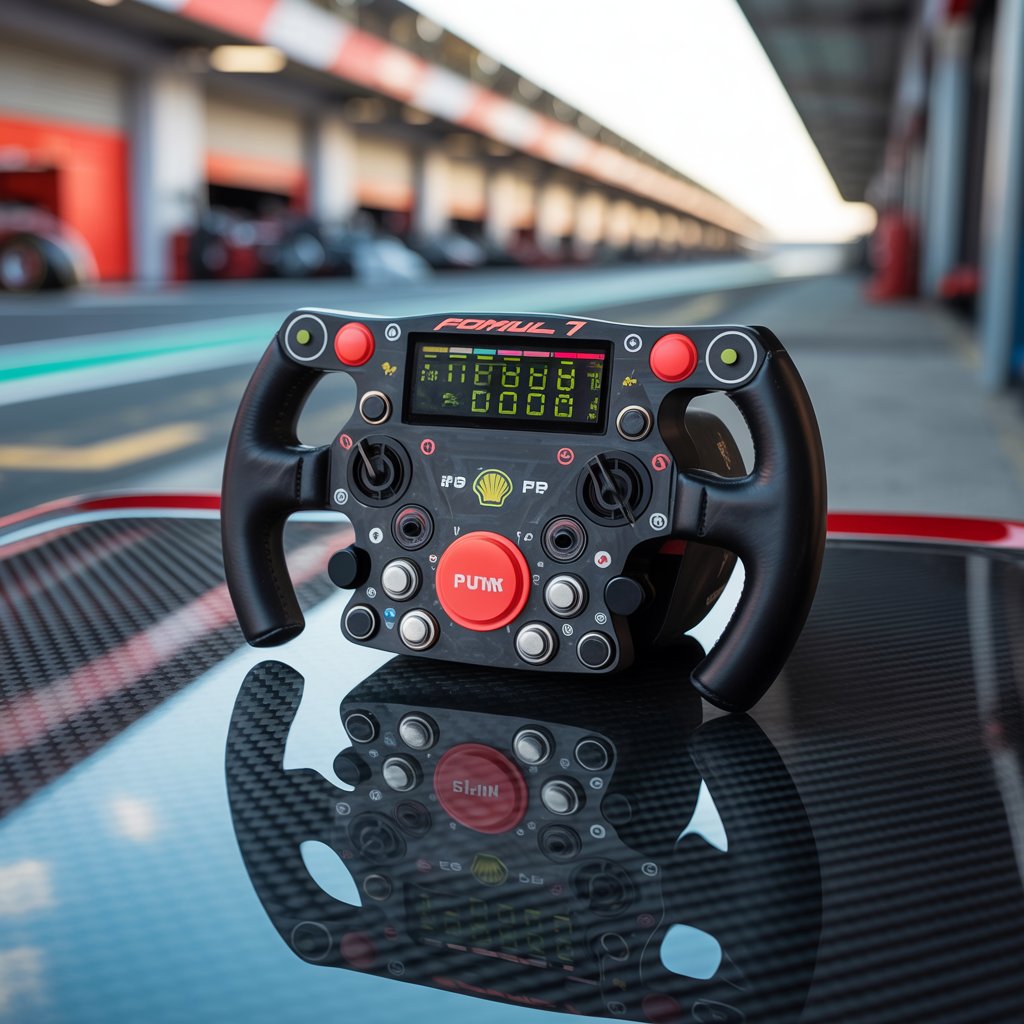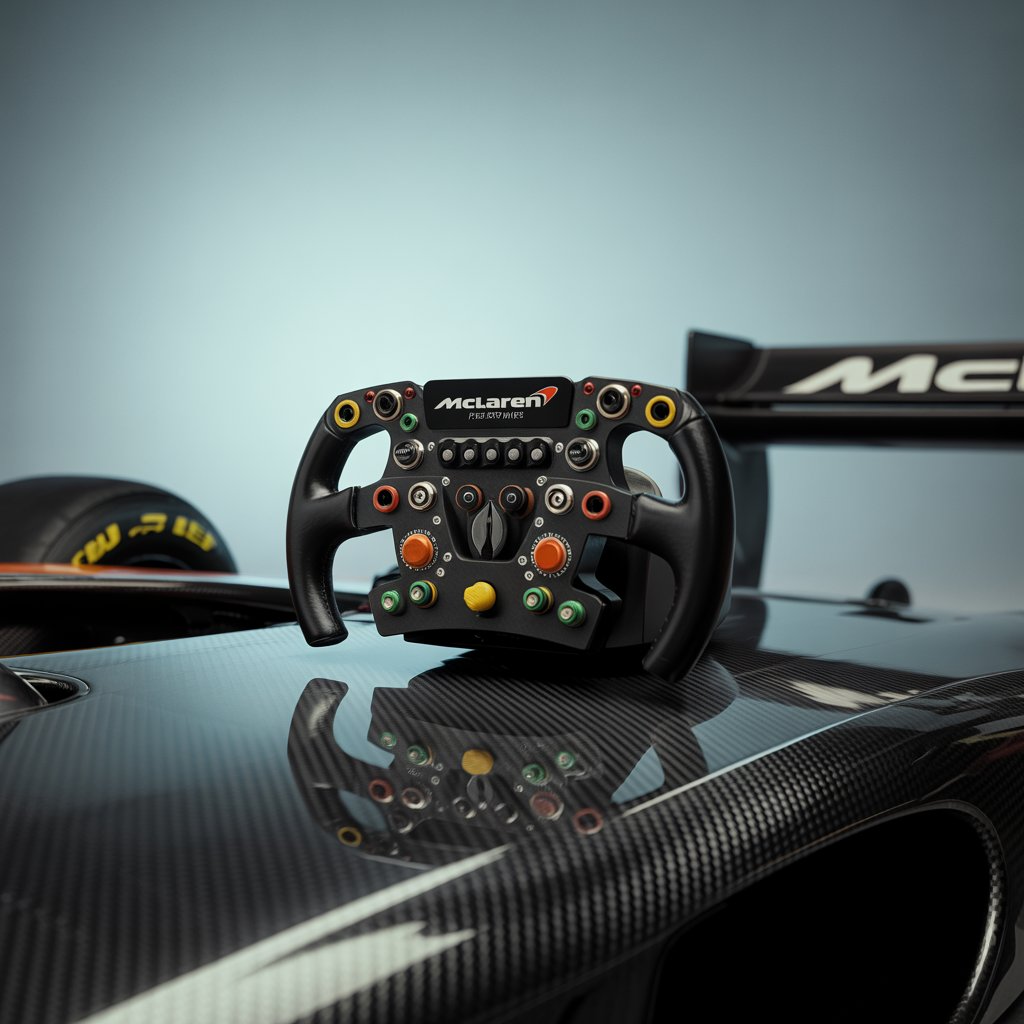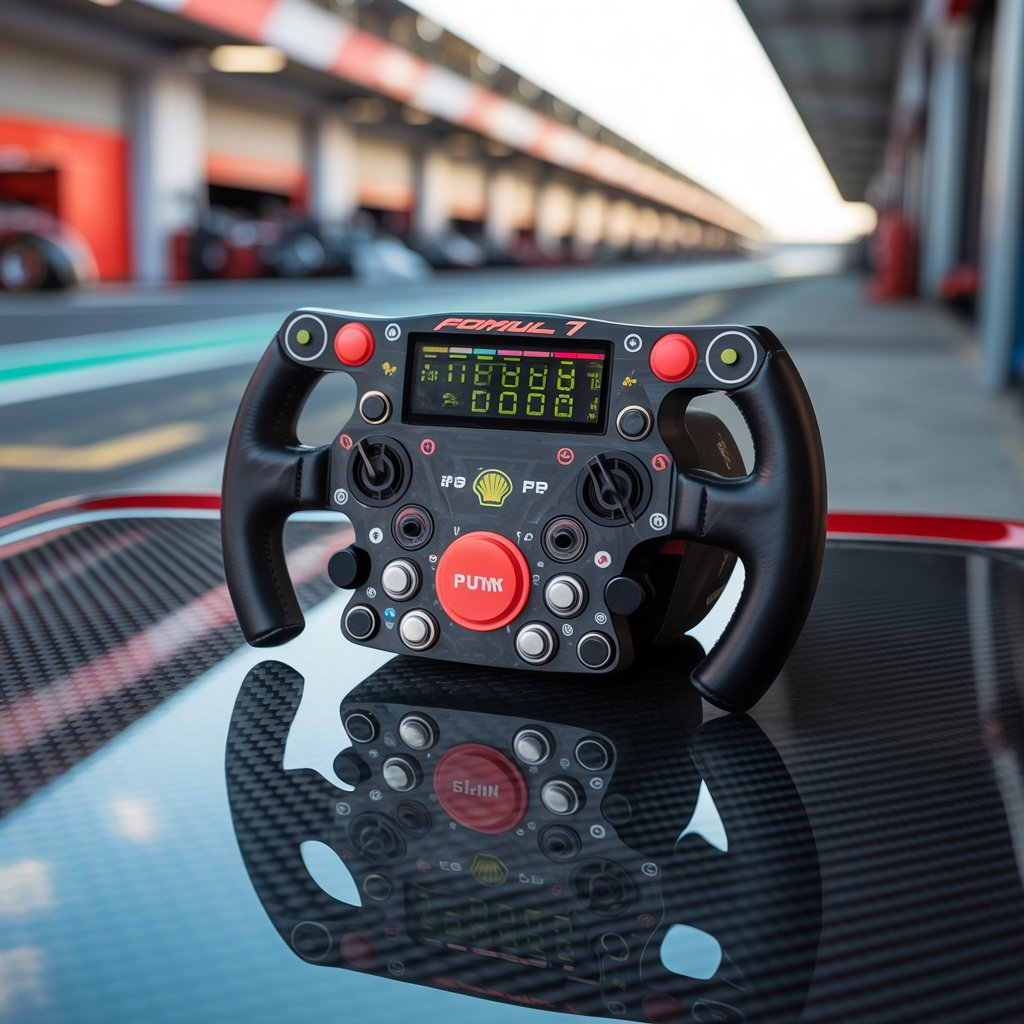
The Formula 1 steering wheel isn’t just high-tech—it’s hyper-specialized. Built from carbon fiber and loaded with electronics, it’s designed to give drivers full control over the car’s complex systems. Unlike a typical wheel, every button, rotary switch, and paddle performs a specific, critical function.
Even among teams, wheels differ. The F1 steering wheel Mercedes drivers use, for instance, looks and functions differently from one used by Red Bull or Ferrari. Each is tailor-made for the team’s needs and the driver’s preferences.

Content
Key Features of an F1 Steering Wheel
Let’s break down what the Formula 1 steering wheel buttons actually do:
Strat Settings: This adjusts the engine strategy mode. Drivers can change settings for fuel efficiency, engine performance, and ERS modes during a race.
MGU-K Settings: Controls energy deployment and recovery. The MGU-K (Motor Generator Unit-Kinetic) harvests braking energy and returns it to the drivetrain.
DRS Activation: The Drag Reduction System opens a flap on the rear wing, reducing downforce and allowing for higher straight-line speed—ideal for overtaking.
Radio & Pit: Communicates with the race engineer or calls for a pit stop.
Clutch & Gear Paddles: Located behind the wheel, these allow for seamless gear shifting and clutch management during starts.
Menu Navigation: Allows drivers to scroll through various system screens to adjust settings like brake bias or tire temperatures.
Each button is color-coded and ergonomically placed for easy access even at 200 mph.
Steering, But So Much More
At its core, yes, the wheel steers the car—but that’s about 10% of what it does. Drivers constantly adjust car behavior on the fly, using the wheel as a control panel. Real-time changes can mean the difference between winning and DNFing (Did Not Finish).
No, they can’t order pizza with it, but adjusting torque, fuel mix, and even tire temp mid-race? Absolutely.
The Mercedes Steering Wheel: A Masterpiece of Engineering
Among the most advanced is the F1 steering wheel Mercedes drivers use. It features dual-axis controls, extra paddles, and over 25 buttons—all precisely laid out to minimize distraction.
What makes Mercedes stand out is how they integrate their hybrid technology with the wheel’s electronics. It’s all about performance tuning on the fly. One twist here, one tap there—and boom—extra tenths off a lap time.

Driving a Formula 1 Car at Home? Kind Of.
For fans and gamers the Formula 1 racing wheel PS4 brings some of this experience to your living room. These wheels replicate the real deal with paddle shifters, LED RPM lights, and even programmable buttons for that authentic racing feel.
While it won’t manage real fuel mixes or activate DRS, it offers a great way to appreciate just how involved the real thing is.
Why Buttons Matter: Precision at 200 MPH
Why so many buttons? In an F1 race, every second counts. Drivers need to adjust settings without taking their eyes off the track. That’s why each Formula 1 steering wheel button is custom-positioned and tuned to minimize distraction and maximize speed.
From changing fuel mixture to switching battery deployment modes, these buttons empower drivers to optimize their car’s performance mid-race. Imagine trying to do all that while cornering at 5G.
The Evolution of Steering Wheels in Formula 1
Early F1 cars had simple, circular wheels with no electronics. Over time, as tech advanced, so did the wheel. By the 1990s, digital displays appeared. In the 2000s, the best Formula 1 steering wheel became a fusion of performance data and control.
Today’s wheels have LCD screens, customizable layouts, and telemetry links. Teams can even upload software updates to a wheel mid-season. Yes, your steering wheel has a firmware update. Welcome to F1.
Customization: One Size Doesn’t Fit All
Every driver works with engineers to tailor the layout of their wheel. While the base shape and structure are similar, button functions and even paddle tension are customized. One driver might want a stiffer clutch paddle; another might need a bigger “Strat” knob.
This customization ensures drivers operate the wheel like a pianist plays a keyboard—flawlessly, even under pressure.

Is There a “Best” F1 Steering Wheel?
The best Formula 1 steering wheel isn’t about brand—it’s about performance and adaptability. While the F1 steering wheel Mercedes uses is highly advanced, Red Bull, Ferrari, and others all have their strengths.
What matters is how the wheel works with the car and driver. The right wheel lets the driver make adjustments instantly without second-guessing.
Conclusion: A Dashboard in Your Hands
The Formula 1 steering wheel is the most important interface between the driver and car. It’s more than just a tool—it’s an extension of the driver’s mind and reflexes.
From Strat settings to MGU-K deployment, the wheel allows drivers to harness cutting-edge technology while hitting speeds over 200 mph. Whether it’s the F1 steering wheel Mercedes or a sim racing Formula 1 racing wheel PS4, every iteration of the F1 wheel brings engineering and performance together.
In short, it’s not just a wheel—it’s a race-winning computer gripped by sheer skill.
FAQs About Formula 1 Steering Wheel
Q: Why are there so many buttons on a Formula 1 steering wheel?
Each button controls vital functions like fuel mix, ERS, or radio. They allow drivers to adjust performance and strategy during a race without stopping.
Q: Can I buy a Formula 1 steering wheel for gaming?
Yes! The Formula 1 racing wheel PS4 offers a close-to-real experience with paddles, LED displays, and programmable buttons for sim racing.

Eldon Barrett’s knowledge of sports is boundless. His in-depth analysis and captivating storytelling will make you see the games you love in a whole new light.


